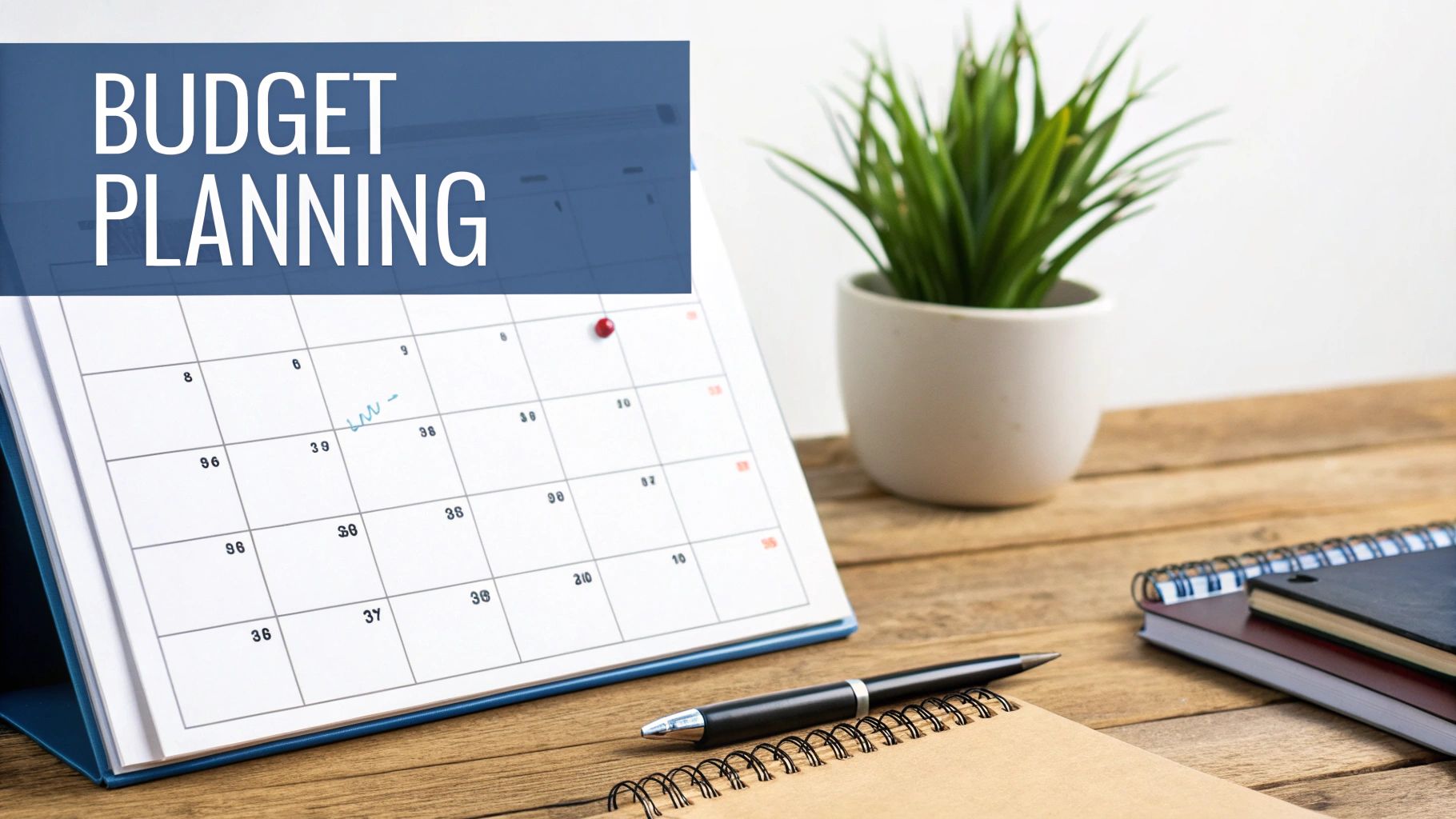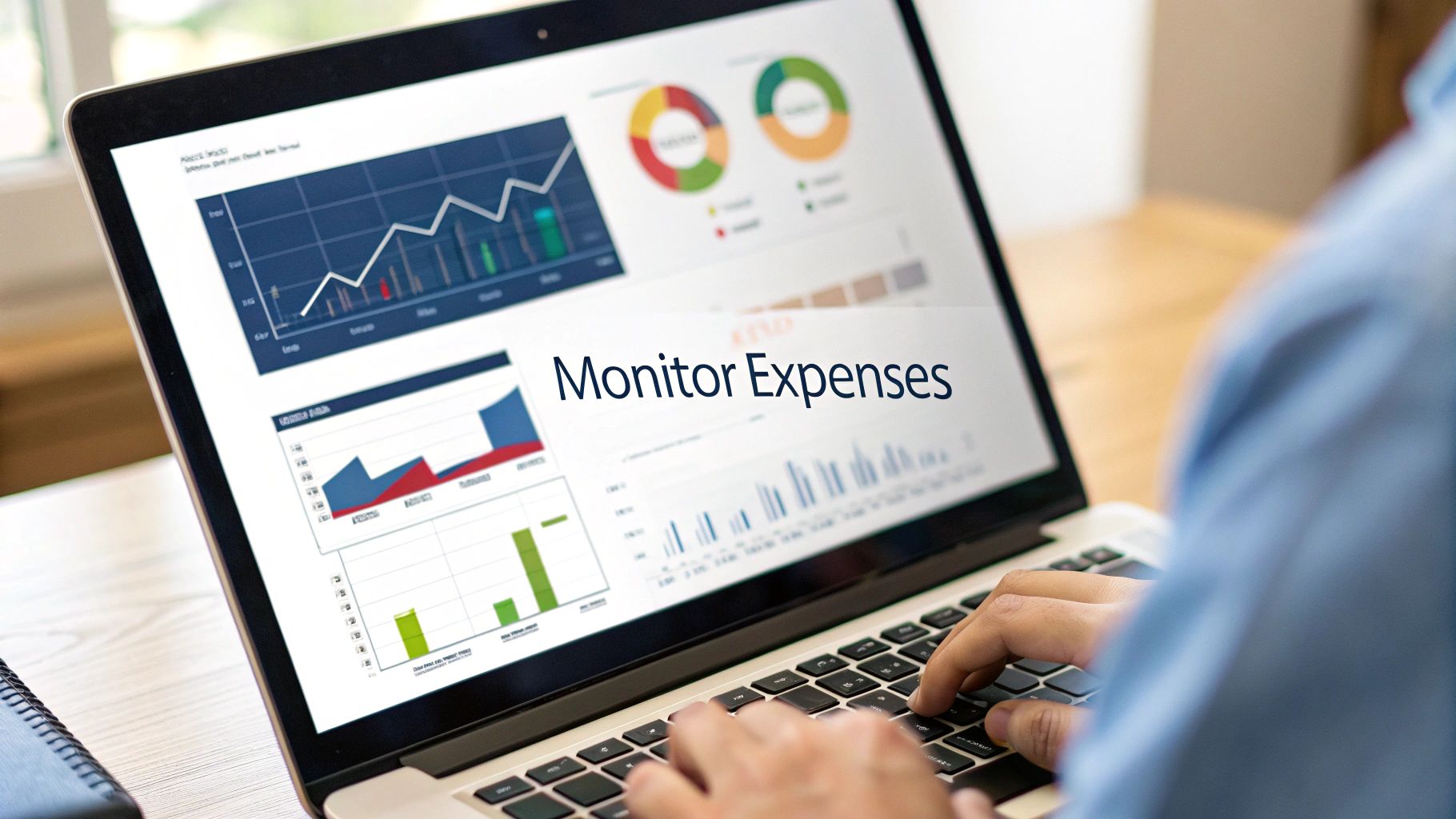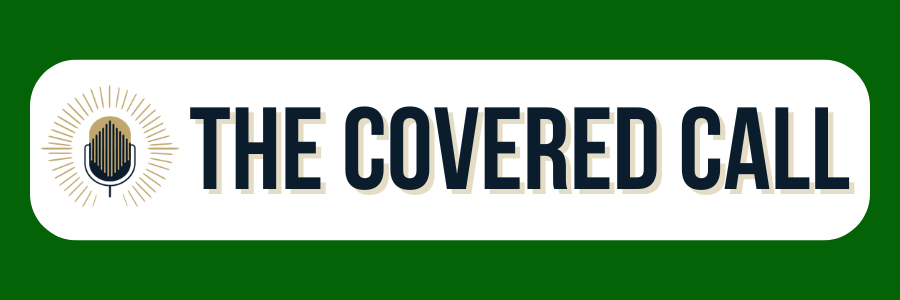Understanding The Foundations of Cash Flow Management

Think of cash flow as your business's oxygen supply - it keeps everything running. It's not just about counting money coming in and going out. The key is knowing exactly when funds will be available to pay your bills and fund growth. While profit looks good on paper, even profitable companies can fail if they run out of cash.
Why Cash Flow Trumps Profit
Picture this: Your company lands a huge order, but you need to buy inventory upfront while giving the customer 90 days to pay. Even with healthy profit margins, you could face serious problems paying suppliers and staff during those three months. Smart businesses avoid this trap by getting payment upfront when possible or carefully timing their expenses. The secret is matching when money comes in with when you need to spend it.
Monitoring the Movement of Cash
Good cash flow management starts with a reliable tracking system. Your cash flow statement should show exactly where money comes from (sales, investments, loans) and where it goes (expenses, equipment, debt payments). Getting this right matters - a recent study found that 49% of finance teams worry about the accuracy of their cash flow data according to Prophix. Without solid numbers, you're flying blind.
Recognizing the Warning Signs
Watch out for these red flags: consistently low cash from operations, customers taking too long to pay, trouble meeting payroll or other regular expenses, and relying heavily on your credit line just to keep going. Spotting these issues early lets you fix problems before they become crises.
Building a Robust Financial Foundation
Strong cash flow comes from good habits: negotiating better payment terms, keeping inventory lean, and staying on top of collecting payments. Build up a cash reserve for unexpected costs or slow periods. Think of it like maintaining a healthy savings account - it provides peace of mind and options when you need them. Master these basics and your business will stand on solid financial ground.
Essential Cash Flow Forecasting Techniques

Good cash flow forecasting helps businesses make smart money decisions. It's about knowing when money comes in and goes out, not just tracking income and costs. This knowledge helps spot potential cash shortages early, find good investment chances, and allocate resources wisely. Let's explore key forecasting methods that can help keep your business financially healthy.
Traditional Forecasting Methods
The basics of forecasting still provide valuable insights for managing cash flow effectively when used properly.
- Short-Term Forecasting: Looks at cash flow over weeks or months ahead. This helps manage daily operations and ensures enough cash for immediate needs.
- Long-Term Forecasting: Maps out cash flow for a year or more. This guides big decisions like investments and financing.
- Sales Percentage Method: Projects cash based on expected sales percentages. If past data shows 10% of sales convert to cash, you'd use this ratio for future estimates. Simple but may miss mark if sales patterns shift.
Adding Data Analysis Tools
Basic methods work well, but adding modern data tools can make your forecasts more accurate.
- Pattern Studies: Looking at past cash flows shows useful patterns, like seasonal changes or growth trends.
- Statistical Analysis: This helps connect cash flow to other business factors like sales or marketing costs. Makes predictions more precise based on these connections.
- Computer Analysis Tools: Many software options now use advanced math to crunch numbers and create accurate forecasts. These save time and often spot things humans might miss.
Planning for Different Outcomes
Smart cash management means being ready for surprises. Creating different scenarios helps prepare for various possibilities.
- Best Case: What happens with highest possible cash income - maybe from great sales or cost savings. Shows opportunities to grow or invest.
- Worst Case: Plans for lowest cash levels from problems like market downturns or supply issues. Having this plan helps businesses survive tough times.
- Likely Case: The most probable outcome based on current facts. This guides your regular budget and helps make realistic choices.
Using these methods gives you a clearer view of future cash positions. This helps make fact-based choices and builds a stronger business. Good forecasting is key to managing cash well - it helps handle money challenges and grab growth chances when they come up.
Optimizing Accounts Receivable Management
Getting paid for your sales quickly and consistently is essential for good business cash flow. Accounts receivable (AR) management is more than just waiting for payments - it's about actively working to convert invoices into cash while keeping good customer relationships.
Creating Clear Payment Terms
Start with payment terms that work for both you and your customers. Set reasonable credit policies that help you get paid while still being fair. For example, offering a 2/10 net 30 option gives customers a 2% discount for paying within 10 days, with full payment due in 30 days. Make it easy for customers to pay by accepting multiple payment methods like credit cards, bank transfers, and online payments.
Using Technology to Streamline Collections
Manual collection tasks take too much time and often lead to mistakes. Using good accounting software connected to payment systems can automate the whole process - from creating invoices to tracking payments. This gives your team more time for important work while reducing errors and speeding up how quickly you get paid.
Offering Early Payment Rewards
Smart early payment incentives help improve cash flow. Beyond standard early payment discounts, consider rewards like loyalty points, priority service, or small thank-you gifts. This approach helps you get paid faster while building stronger customer relationships. Customers feel good about paying early, and you get your money sooner.
Managing Late Payments Effectively
Some late payments will always happen, so have a clear plan for handling them. Set specific steps for following up, including late fees and when to use collection agencies. But start with open communication - a friendly phone call or email often resolves things quickly. If a good customer has temporary money problems, offering a payment plan might work better than aggressive collection tactics. Remember that keeping customers happy usually leads to steady long-term income.
Strategic Inventory and Supplier Management

Managing cash flow means finding the right balance with inventory and supplier relationships. Having too much stock locks up your money, while too little can mean missing out on sales. Let's explore how businesses handle these key areas to keep cash flowing smoothly.
Negotiating Favorable Payment Terms With Suppliers
Smart payment terms can give your cash flow a major boost. Rather than accepting standard terms, talk with suppliers about longer payment windows. For example, getting 60-day terms instead of 30 days lets you earn revenue for an extra month before paying bills. Also watch for early payment deals - if a supplier offers a 2% discount for quick payment within 10 days, taking it could be worth it when you have available funds.
Implementing Dynamic Inventory Systems
Extra inventory is like money gathering dust on shelves. Modern inventory systems solve this by adjusting stock based on current demand and sales predictions. By ordering only what you need when you need it, you'll spend less on storage, avoid outdated products, and free up cash that would be stuck in unsold goods.
Using Technology for Supply Chain Management
The right tools make a big difference in supply chain and cash flow management. Good inventory software tracks stock, predicts demand, and helps manage supplier relationships. For example, a cloud-based system shows real-time inventory across locations, helping you make smart restocking choices. When connected to supplier systems, it also speeds up ordering and communication.
Using Data Analytics to Predict Inventory Needs
Data helps businesses make smarter inventory decisions. By looking at past sales, market patterns, and other key factors, you can better predict what stock you'll need. This helps prevent both running out of products and having too much inventory on hand. Think of it as getting a sneak peek at future demand to guide your purchasing.
Building Strong Supplier Relationships
Good supplier relationships can really help your cash flow. Open communication often leads to better payment terms, pricing, and even financing options. When you treat suppliers as partners, they're more likely to work with you during tough times. For instance, they might extend payment deadlines during slow periods, giving you time to boost sales and improve your cash position. Focus on building trust - it opens doors to flexible solutions that support healthy cash flow.
Modern Tools for Better Cash Flow Control

Smart software and digital tools can dramatically improve how you track and manage cash flow. Moving beyond basic spreadsheets to platforms that offer real-time data and automated processes helps businesses make smarter financial decisions.
Smart Analytics for Better Forecasting
Artificial Intelligence helps businesses predict cash flow with greater accuracy. Modern AI tools can process extensive data from sales history, market patterns, and economic factors. These tools spot subtle trends that humans might miss, enabling better choices about spending and investments. The result is more precise financial planning and the ability to adjust strategies quickly when needed.
Simplifying Tasks Through Automation
The right software can handle many routine cash flow tasks automatically. This includes generating invoices, sending payment reminders, and matching transactions. By reducing manual work, your team can spend more time analyzing data and finding ways to improve cash flow. The shift from paperwork to strategic thinking leads to better financial outcomes.
Connecting Your Financial Tools
Getting the most from cash flow tools often means connecting your existing systems with new ones. For example, linking your accounting software to payment systems gives you an up-to-date view of your cash position. This reduces data entry and mistakes. Many platforms now offer simple dashboards that show your current cash status, making it easy to spot and fix issues quickly.
Picking the Right Tools
When choosing cash flow management tools, focus on what your business actually needs. Key features to look for include:
- Current cash status reports: See your money position right now
- Automated billing: Speed up invoice and payment processing
- Future planning tools: Help predict upcoming cash needs
- Easy connections: Work smoothly with your current systems
Take time to train your team on new tools and fit them into your daily operations. Good implementation ensures you get value from your investment and improves your cash management.
Tracking Tool Performance
Keep track of how well your new tools are working. Watch for time saved, fewer mistakes, and better cash predictions. Measuring these improvements helps show the value to your team and supports future tech investments. This practical approach ensures your spending on tools helps your bottom line.
Clear data and automated processes give businesses better control over their money. This helps companies handle market changes, take advantage of opportunities, and build lasting success. Smart cash flow management tools help businesses stay strong and grow steadily.
Crisis-Proofing Your Cash Flow
Just as a ship needs a robust hull to handle rough seas, your business requires solid cash management plans to handle financial uncertainties. Taking steps before problems hit can help protect your company from unexpected money troubles.
Building and Maintaining Emergency Reserves
Every business needs a financial safety net for tough times. Set aside enough cash to cover 3-6 months of basic operating costs. This buffer helps you handle late customer payments, drops in sales, or surprise expenses without resorting to expensive loans or cutting important investments.
Developing Effective Early Warning Systems
Track key numbers that signal potential cash problems, like how long it takes customers to pay (days sales outstanding), your operating cash margins, and your current ratio of assets to debts. Regular checks of these metrics work like an early warning system - they help you spot issues while there's still time to fix them. For instance, if customers are taking longer to pay, you may need stricter payment terms or better invoicing.
Creating Flexible Response Plans
Have clear steps ready for different financial scenarios, whether it's an economic downturn or supply chain problems. Your plans should cover ways to:
- Cut costs quickly
- Speed up customer payments
- Access backup funding if needed
Like a captain with different plans for various weather conditions, these prepared responses help you act fast when challenges arise.
Balancing Prudence and Growth
Smart cash management doesn't mean stopping all growth plans. Look for opportunities that:
- Generate quick returns on investment
- Use specific funding for growth projects
- Keep core cash reserves safe
This balanced approach helps you grow while maintaining financial stability.
Want to learn more about building financial security? Check out The Covered Call Podcast for insights from successful entrepreneurs and investors. Hear practical advice from guests like Luke Gromen, Rick Rule, and Doug Casey on creating lasting wealth and financial independence.

